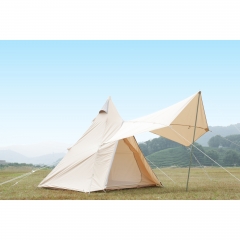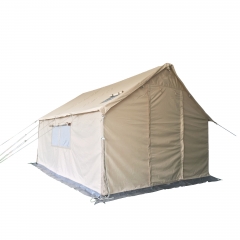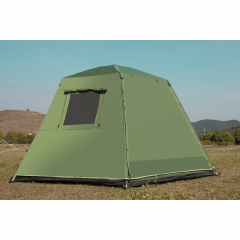Canvas Tent Maintenance
Want to know some tips for caring for your tent? When you buy a tent for the first time, learn how to take care of it, how to store it, and what to do every 3-6 months to keep the best performance possible for your
tent.
Tent storage
Mold, rats, and mites are the biggest threats to storage tents. When not in use, please follow the tent storage guidelines below to protect your tent.
Never get your tent wet!
Your tent, floor coverings, and lanyards must be completely dry before you can put them in the bag. If you must dismantle the tent when it is wet, you can fold it loosely for transportation, and then spread it out to dry within 24 hours. If it can't be dried outdoors, take it indoors to dry before packing it up.
Pack your tent clean
Moisture contained in vegetation and dirt can breed mold. Sweep the tent inside and out, then pack it.
 Store it high and dry
Store it high and dry
Put the packed tent in a cool and dry place and avoid storing it in a damp basement. Do not place tents on the floors of garages and warehouses, as these areas may be flooded by rain or become puddles.
Long-term storage
If you want to store the tent for a long time or put the tent in a place where rats and bugs are infested, consider putting the tent in a large, clean plastic trash bin with a lid.
Cleaning a tent
Frequent cleaning and reprocessing of your tent can increase the life of your tent and is an essential part of maintenance. Environmental factors, such as humidity, UV exposure, airborne particles from vegetation, and mold spores, can vary greatly from location to location.
Canvas tent supplier recommends cleaning and retreating the tent after 3-6 months of use, however, depending on your environment, you may need to clean it more or less. Always find problems with cleanliness and retreat because of need.
It is important to deal with any mold and mildew immediately to kill the spores and prevent them from spreading. Once the canvas becomes moldy, it is almost impossible to remove the stain.
How to clean a canvas tent
Clean the tent and prepare for reprocessing. Dry mud or dirt can be brushed off with a soft brush. You need a hose, bucket, soft brush or sponge, cleaning solution, and reprocessing solution.
Mix 4 parts water and 1 part vinegar to kill mold, or use a cleaning product for a canvas of your choice.
Unfold your tent, nail the moisture-proof cloth with wooden stakes, and remove all dust, dirt, and particles with a clean broom or vacuum cleaner with a brush attachment.
Hose down the tent.
Use a soft brush or sponge to gently clean the fabric with an appropriate solution, and rinse while washing. Start from the peak and continue to the bottom. It may be helpful to set up a tent after clearing the hard-to-reach areas at the top.
Rinse. Then rinse again. Make sure to remove any remaining cleaning solution.
Let the tent dry completely before retreating.
(Re)waterproof
After cleaning, the canvas must be moved back to keep it waterproof, mildew, and UV resistant. Most solutions are sold as waterproofing treatments, however, they also provide protection from sun and dirt, which can degrade fabrics and limit the natural waterproofing capabilities of high-quality canvas fabrics. You can use a variety of different processing methods according to your personal preferences.
How to retreat a canvas tent
Make sure the canvas is dry and clean.
Use sprayers, plant sprayers, or paint rollers to widely apply reprocessing products. Follow the instructions recommended by the manufacturer of the product you are using.
Allow drying completely before storing. Repeat if necessary.




